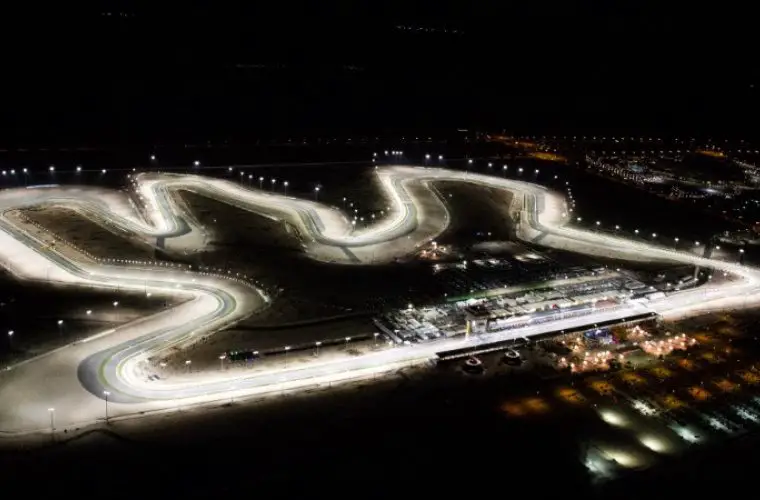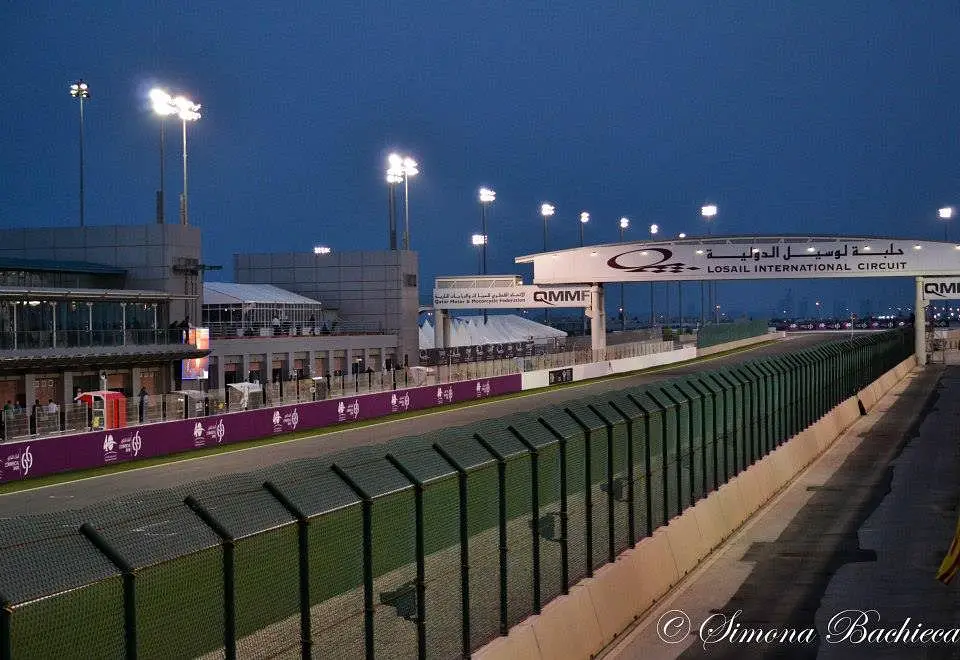Here’s everything you need to know about the Lusail International circuit – the venue for the Qatar Grand Prix – track guide.
The Lusail International Circuit covers a distance of 5.38 kilometers and consists of a total of 16 corners, including 10 right turns and 6 left turns.
The main straight of the circuit measures just over one kilometer, serving as the sole F1 DRS (Drag Reduction System) zone and allowing cars to reach speeds of over 220 kilometers per hour during races.
The sharp right turn leading into the first corner offers a significant opportunity for cars to overtake. Furthermore, the nearly flat sequence of three consecutive right-hand corners from turns 12 to 14 is expected to challenge drivers in terms of tire wear.

Lusail stands out by featuring just one designated DRS (Drag Reduction System) zone, setting it apart from some other Formula One tracks.
This unique characteristic brings excitement but also limits opportunities for overtaking. In 2021, it hosted the 20th race of the Formula One season, debuting the Qatar Grand Prix.
To prepare for the second edition of the Grand Prix, significant renovations and facility enhancements took place, including a substantial increase in spectator capacity from 8,000 to 52,000. The circuit itself measures 5.419 kilometers (3.367 miles) in length, boasting an impressive 1.068-kilometer (0.664-mile) main straight. Furthermore, artificial grass surrounds the track to prevent sand from encroaching onto the racing surface.
The Lusail Circuit is one of the most challenging tracks in the F1 Calendar
The Lusail International Circuit poses a formidable set of challenges for Formula 1 drivers and teams. Located in the desert state of Qatar, the intense heat is a significant obstacle.
These extreme temperatures can result in tire wear and engine overheating, requiring inventive solutions from teams to ensure both car performance and tire durability. Moreover, the circuit’s lengthy straights create opportunities for high-speed racing, emphasizing the importance of engine power and aerodynamics as teams seek an edge in straight-line speed. Nevertheless, these straights are punctuated by technical corners that demand precise braking and handling, rigorously putting drivers’ skills to the test.

The Circuit’s mix of long straights and tight corners requires Formula 1 teams to establish a finely-tuned setup. They need to find the right equilibrium between achieving high speed and maintaining effective cornering capabilities. Moreover, the circuit’s night races, illuminated by floodlights, add another layer of complexity with visibility and glare management becoming critical considerations.
Additionally, the harsh desert climate, marked by searing temperatures, presents a formidable challenge for both the cars and the drivers. The ongoing struggle revolves around preserving engine and tire performance in these demanding conditions.
Conclusion
In summary, the Qatar Grand Prix at the Lusail Circuit presents a unique challenge to drivers with a sequence of three consecutive right-hand corners from turns 12 to 14 and features just one designated DRS zone, which adds excitement but limits overtaking opportunities. The circuit underwent significant renovations, including increased spectator capacity, in preparation for its second edition in Formula One.
More Formula One News
- Lewis Hamilton doesn’t support IOC’s decision on Black Lives Matter gear during Olympics
- Max Verstappen left surprised as he reaches 100 race milestone with Red Bull
- Damon Hill left in awe after Lewis Hamilton racks up 100 poles in F1 ahead of 2021 Spanish GP
Follow our dedicated Formula One page for instant Formula One news and updates

